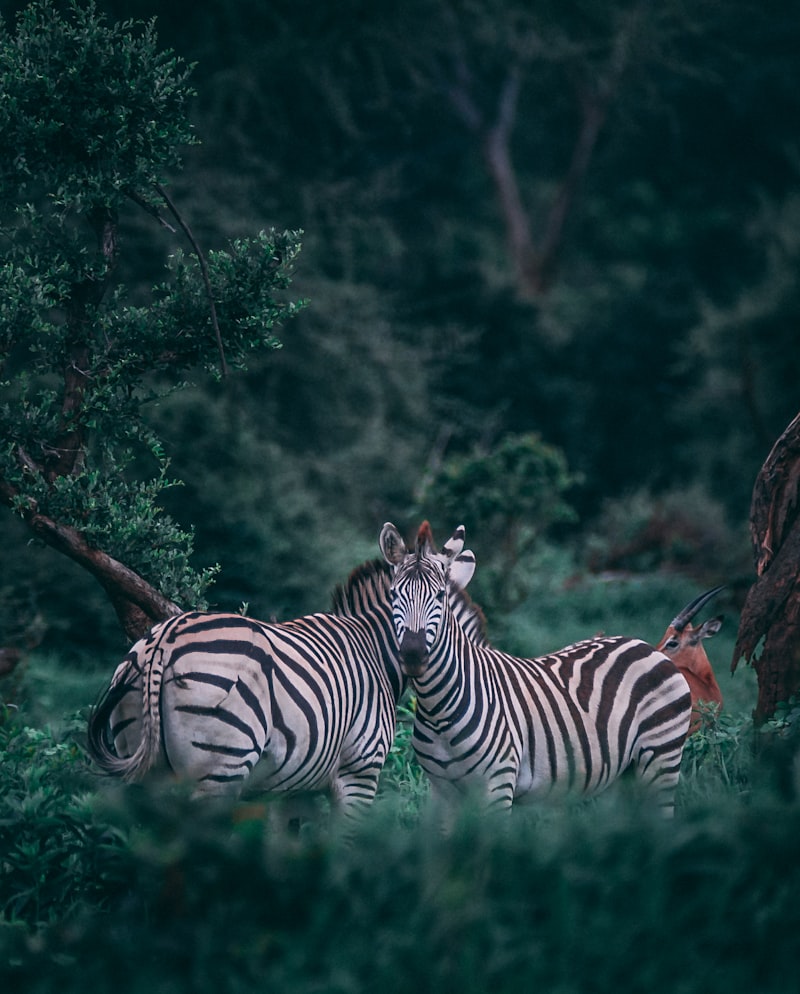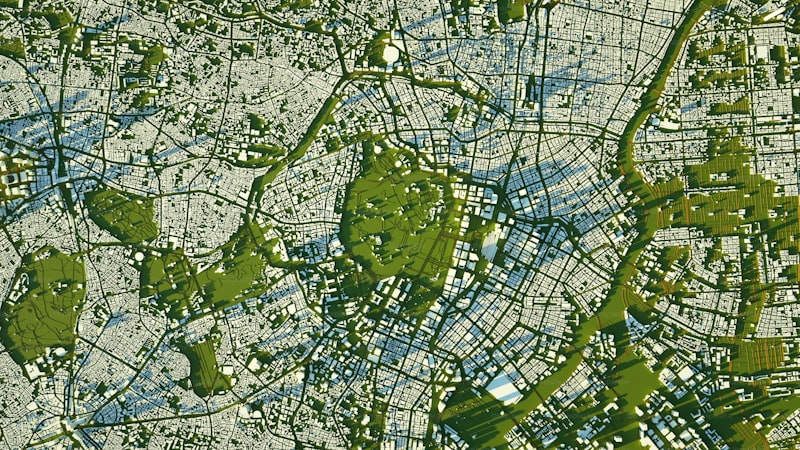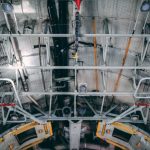
Imagine a bustling cityscape, where towering buildings replace dense forests, and busy highways cut through what was once lush wilderness. This transformation, while marking progress for human civilization, creates profound disruptions for wildlife. Species accustomed to vast territories find themselves confined to fragmented patches of green spaces, struggling to adapt amidst concrete and noise.
The impact of urbanization on wildlife is profound and multifaceted. It disrupts migration patterns, limits access to food and water sources, and increases the risk of encounters with human activities. Animals accustomed to roaming freely now navigate a maze of human infrastructure, risking collisions with vehicles or exposure to pollutants.
Moreover, urban environments alter natural ecosystems, often favoring species that can adapt to urban living—think of squirrels thriving in city parks while more sensitive species dwindle. This shift in biodiversity can lead to imbalances, affecting not just wildlife but also the overall health of urban ecosystems.
Yet, amidst these challenges, there are tales of resilience. Some species have adapted surprisingly well, finding niches in urban niches in unexpected places like parks or gardens. Birds nesting on skyscrapers or raccoons raiding garbage bins are urban sights that remind us of nature’s ability to persist even in the face of adversity.
Concrete Jungles: How Urbanization Threatens Wildlife Habitats
Imagine a bustling cityscape, where skyscrapers soar and highways hum with activity. Amidst this urban sprawl, what happens to the creatures that once called these lands home? Wildlife habitats are fragmented, disrupted, and often destroyed to make way for roads, buildings, and industrial complexes. The lush greenery that once sustained diverse species is replaced by sterile pavements and artificial structures.
Asphalt and concrete replace forests and wetlands, leaving little room for wildlife to thrive. Species that require large ranges to hunt, breed, or migrate find themselves boxed into isolated pockets of green amidst a sea of gray. This fragmentation can lead to genetic isolation, reducing the resilience of populations to environmental changes and increasing their vulnerability to diseases.
Moreover, urbanization brings with it a host of other challenges for wildlife. Increased pollution levels, noise, and light pollution disrupt natural behaviors and physiological processes. For nocturnal creatures, the glare of city lights can interfere with their ability to hunt, navigate, and communicate effectively.
Despite these challenges, there is hope. Conservation efforts, urban planning initiatives, and green infrastructure projects aim to mitigate the negative impacts of urbanization on wildlife habitats. By integrating green spaces into city planning, creating wildlife corridors, and promoting sustainable development practices, cities can become more hospitable environments for both humans and wildlife.
Adapting or Disappearing: Wildlife Survival Amid Urban Growth
Urban growth alters ecosystems dramatically, fragmenting once contiguous habitats into isolated patches. For wildlife, this fragmentation disrupts migration routes, access to food sources, and mating patterns. Species accustomed to expansive territories now find themselves confined to smaller areas, navigating roads, buildings, and other human-made barriers.
Adaptation becomes crucial for survival. Some animals, like raccoons and coyotes, exhibit remarkable resilience, adjusting their behaviors to thrive in urban settings. They scavenge for food in trash cans, utilize green spaces as makeshift habitats, and even learn to navigate traffic. These adaptive behaviors not only sustain them but also sometimes lead to unintended interactions with humans.
However, not all species can adapt. Some, especially those with specialized habitat requirements or narrow dietary needs, struggle to survive in urban environments. Their populations decline as they face challenges such as pollution, predation by domestic animals, and lack of suitable nesting sites.
The story of wildlife amid urban growth is a complex narrative of resilience and vulnerability. It prompts us to consider the broader implications of urbanization on biodiversity and ecosystem health. As cities expand, conservation efforts become increasingly critical to mitigate the impact on wildlife. Balancing development with conservation measures is essential to ensure that future generations can still experience the beauty and diversity of our natural world.
In this evolving landscape, understanding the dynamics of wildlife adaptation provides valuable insights into coexistence strategies. It challenges us to rethink urban planning practices, integrate green spaces, and create wildlife corridors to facilitate movement across urban landscapes. By doing so, we can strive towards a harmonious balance where both humans and wildlife can thrive together in our expanding cities.
The Silent Exodus: Urbanization’s Toll on Wildlife Migration
Imagine a world where migratory birds no longer darken the skies during seasonal journeys, or where large mammals struggle to find safe passages between feeding and breeding grounds. This is the reality faced by countless species as urban areas encroach further into their territories.
The impact is profound. Species that rely on predictable migration routes for survival face heightened risks of extinction. Animals accustomed to following natural landmarks or environmental cues find themselves navigating through a maze of human-made obstacles – highways, high-rise buildings, and artificial lights that disrupt their natural rhythms.
For instance, amphibians like frogs, which migrate to breeding ponds, now contend with busy roads that often prove deadly during their nocturnal journeys. Similarly, sea turtles, which rely on moonlight to guide hatchlings to the sea, are disoriented by coastal developments that obscure celestial navigation cues.
Moreover, the loss of critical stopover sites – places where migratory animals rest and refuel – exacerbates the toll of urbanization. Wetlands drained for construction or forests cleared for agriculture deprive birds and mammals of vital refuges, leaving them vulnerable to exhaustion and predation.
Efforts to mitigate these effects are crucial but challenging. Wildlife corridors and green bridges aim to reconnect fragmented habitats, allowing animals to move more freely. Conservationists advocate for urban planning that considers wildlife needs, integrating green spaces and biodiversity-friendly infrastructure into city designs.
As cities continue to grow, the fate of migratory species hangs in the balance. Balancing human development with the preservation of wildlife migration routes remains a pressing challenge for environmentalists, policymakers, and communities worldwide. The silent exodus speaks volumes about our impact on the natural world and underscores the urgency of sustainable coexistence between urban life and wildlife.
Urbanization’s Unseen Victims: Wildlife Extinction on the Rise
Imagine a bustling cityscape, alive with the pulse of human activity. Skyscrapers stretch towards the sky, and streets buzz with cars and pedestrians. It’s easy to be awestruck by the marvels of modern urban life, but amidst this urban sprawl lies a hidden tragedy: the silent plight of wildlife facing extinction.
As cities expand, natural habitats shrink. Forests are cleared for residential complexes, wetlands are drained for agriculture, and rivers are dammed for hydroelectric projects. These developments encroach upon the territories of countless species, pushing them to the brink of extinction. Birds lose their nesting grounds, mammals lose their hunting grounds, and plants lose their habitats.
Take, for instance, the majestic Bengal tiger. Once roaming freely in the forests of India and Bangladesh, its population has dwindled due to habitat loss and fragmentation caused by urbanization. Tigers need vast territories to hunt and thrive, but as cities expand, these territories are increasingly fragmented, making it harder for tigers to find mates and sustain their populations.
It’s not just large animals that suffer. Smaller creatures like insects and amphibians are equally vulnerable. Urban pollution, artificial lighting, and noise disrupt their natural behaviors and life cycles. Light pollution, for instance, can confuse nocturnal animals, leading them away from their habitats or exposing them to predators they would otherwise avoid.
The impact of urbanization on wildlife is profound and multifaceted. While some species adapt to urban environments, many do not. Urban areas act as barriers, preventing species from migrating and dispersing. This isolation can lead to inbreeding and genetic bottlenecks, further endangering populations already struggling to survive.
Efforts to mitigate these effects are underway, with conservationists working tirelessly to create wildlife corridors, protected areas, and green spaces within urban landscapes. These efforts aim to reconnect fragmented habitats, allowing species to move and adapt more freely.
However, the future remains uncertain. As cities continue to grow and expand, the pressure on wildlife will only increase. Balancing urban development with conservation is a delicate task that requires careful planning and cooperation between governments, businesses, and communities.
From Forests to Skyscrapers: Urbanization’s Impact on Animal Behavior

Take the example of birds. In the forest, their songs resonate through the trees, marking territory and attracting mates. But in the city, amidst the cacophony of traffic and human activity, these songs can be drowned out or altered. Birds must sing louder or at different frequencies to be heard, affecting their communication and breeding patterns.
Similarly, mammals like foxes and raccoons, once nocturnal hunters of the forest, now navigate streets and alleyways under the glow of streetlights. They scavenge for food in trash bins or adapt to new prey in urban parks, all while evading cars and human settlements. This shift in diet and behavior can impact their health and reproduction rates.
Even insects are not spared from urbanization’s reach. Bees and butterflies, essential for pollination in natural ecosystems, must now contend with fragmented green spaces and pesticide use. Their foraging patterns change, affecting plant reproduction and biodiversity in urban areas.
Moreover, the very physiology of animals can be altered by urban environments. Air and noise pollution can stress animals, leading to changes in hormone levels and immune systems. Urban heat islands, created by vast expanses of concrete and asphalt, raise temperatures, affecting breeding seasons and migration patterns.
In essence, urbanization is reshaping the natural world in ways that are both visible and invisible. While some species thrive in urban settings by adapting quickly to new resources and opportunities, others face decline or extinction. As cities continue to grow, finding ways to mitigate these impacts becomes crucial for the coexistence of humans and wildlife.
Frequently Asked Questions
What are some examples of wildlife species impacted by urban development?
Explore examples of wildlife species affected by urban development, including birds like sparrows and pigeons, mammals such as raccoons and squirrels, and amphibians like frogs and salamanders. Urbanization alters habitats, affecting the survival and behavior of these species.
What measures can be taken to mitigate the negative effects of urbanization on wildlife?
Discover effective measures to mitigate the negative impacts of urbanization on wildlife with our concise FAQ. Learn practical strategies such as creating green corridors, establishing wildlife-friendly urban planning policies, promoting habitat restoration initiatives, and implementing wildlife crossings to ensure coexistence in urban environments.
How does urbanization influence wildlife migration patterns?
This FAQ section explores the impact of urbanization on wildlife migration patterns. It examines how urban development alters natural habitats, affecting the routes and behaviors of migrating animals. Discover insights into the challenges wildlife face amidst urban growth and strategies to mitigate these impacts.
How does urbanization affect habitat loss for wildlife?
Learn how urbanization impacts wildlife habitats and contributes to habitat loss. Understand the direct and indirect ways urban development alters ecosystems, displaces wildlife, and reduces biodiversity.
What are the main challenges wildlife face due to urbanization?
Learn about the primary challenges wildlife face as urban areas expand, including habitat loss, fragmentation, increased human-wildlife conflicts, and disruption of natural behaviors and migration patterns.


